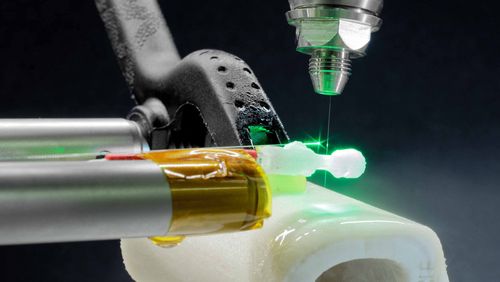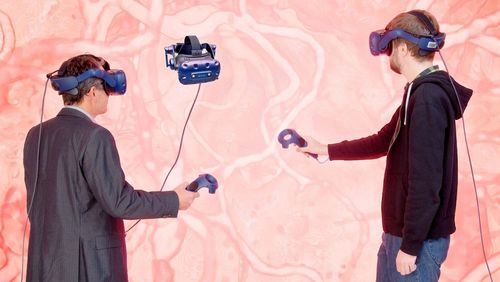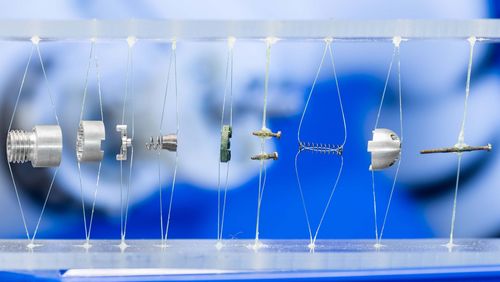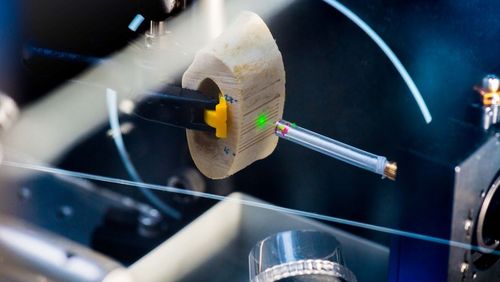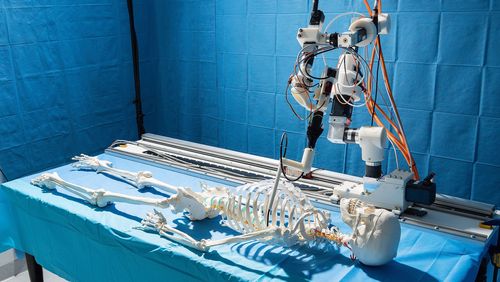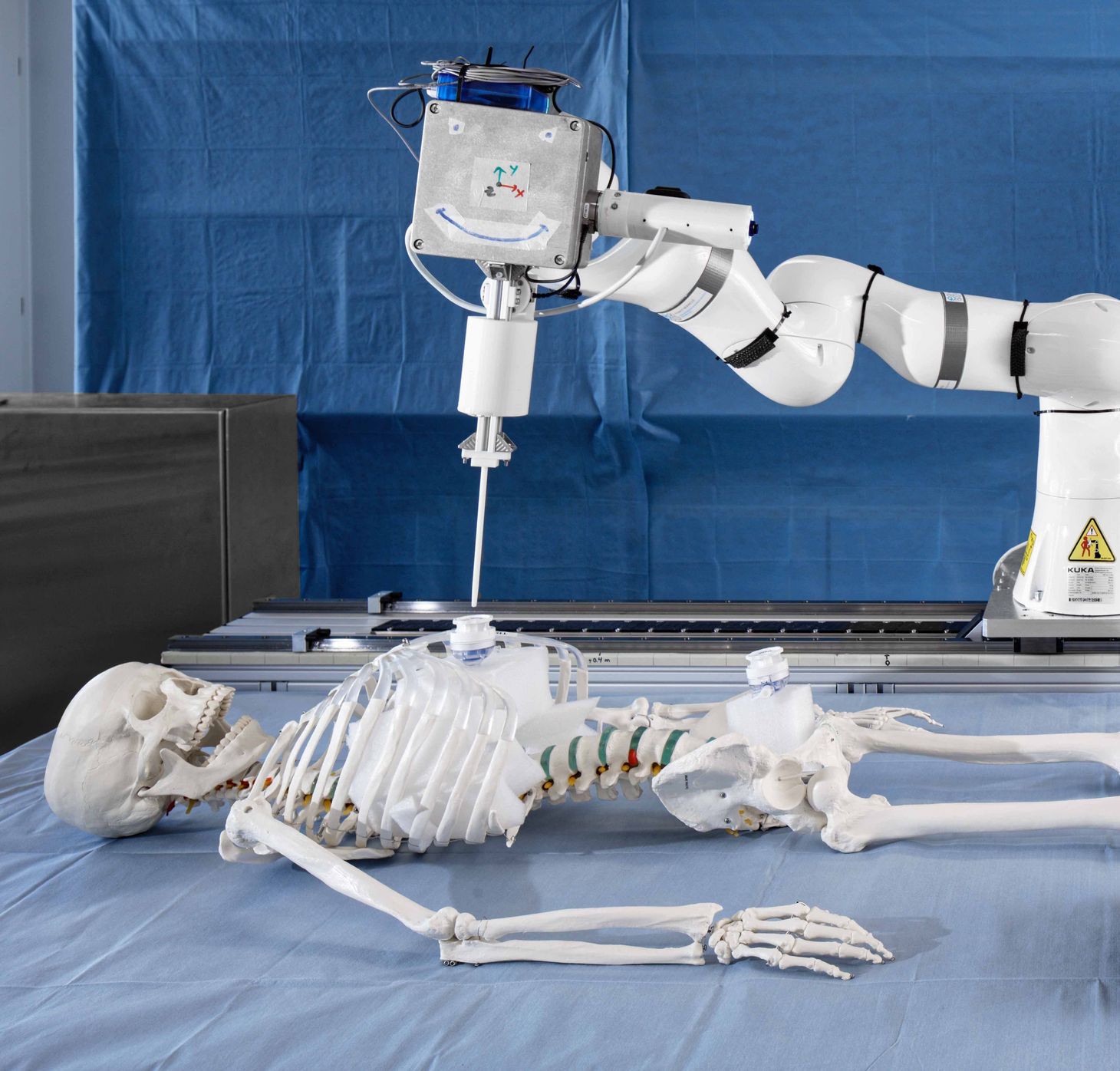
MIRACLE
Laser scalpel instead of bone cutter: The MIRACLE project at the University of Basel is working on revolutionising bone surgery. A robot-controlled laser system not only cuts finely and precisely, but also ensures that no cut is missed thanks to newly developed sensors and virtual reality software.
Laser scalpel instead of bone cutter - in the MIRACLE project at the University of Basel researchers are looking to revolutionise bone surgery. Their robot-guided laser system is not only capable of making high-precision incisions. It also ensures that no cut is missed thanks to newly developed sensors and virtual reality software.
Minimally invasive, patient-friendly interventions have become standard in many areas of medical care, but not in bone surgery. Indeed, modern bone cutters are fairly similar to primitive medieval instruments, and cutting bones remains a crude affair. The team in the MIRACLE project at the University of Basel and University Hospital Basel led by Philippe Cattin and Hans-Florian Zeilhofer want to change this.
The researchers in Basel are developing a robot-guided system that uses lasers to cut bones. Not only can the “laser scalpel” make extremely fine, precise incisions straight through the bone, it can cut curved and S-shaped lines too. This means that broken bones can be fitted together again like three-dimensional puzzle pieces, which leads to faster healing. In addition, sensors placed in the endoscope tip of the laser and a virtual reality software programme ensure that the laser cuts only the tissue that is targeted.
The team have already begun testing their system in knee surgery. Making ultra-exact incisions in the bone is, however, just the first step. Afterwards, the damaged bone requires an implant to heal. Seeking ways to create made-to-measure implants for individual patients and then insert them using minimally invasive techniques is one of the main objectives in MIRACLE II, the follow-up project to MIRACLE.
Facts and figures
Funding from the Werner Siemens Foundation
15.2 million Swiss francs
Project leader
Prof. Dr Pilippe Cattin, professor of Medical Image Analysis and head of the Department of Biomedical Engineering, University of Basel
Prof. Dr Hans-Florian Zeilhofer, head of the Clinic of Oral and Maxillofacial Surgery, University Hospital Basel
Project duration
2014–2027
